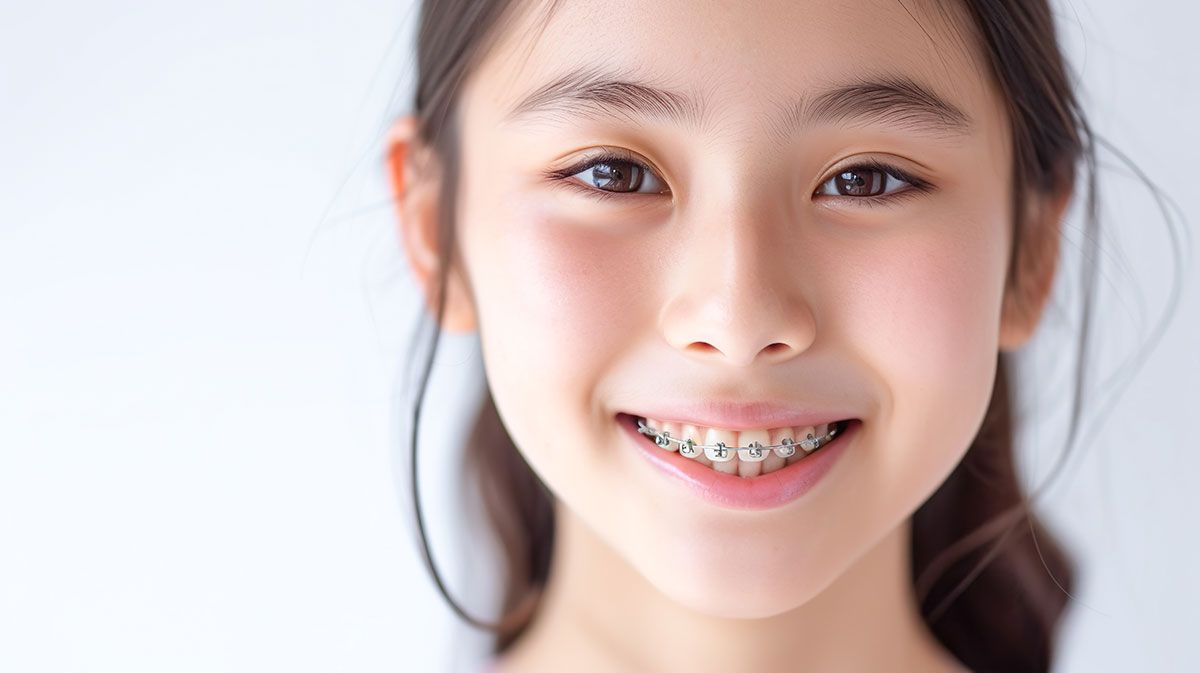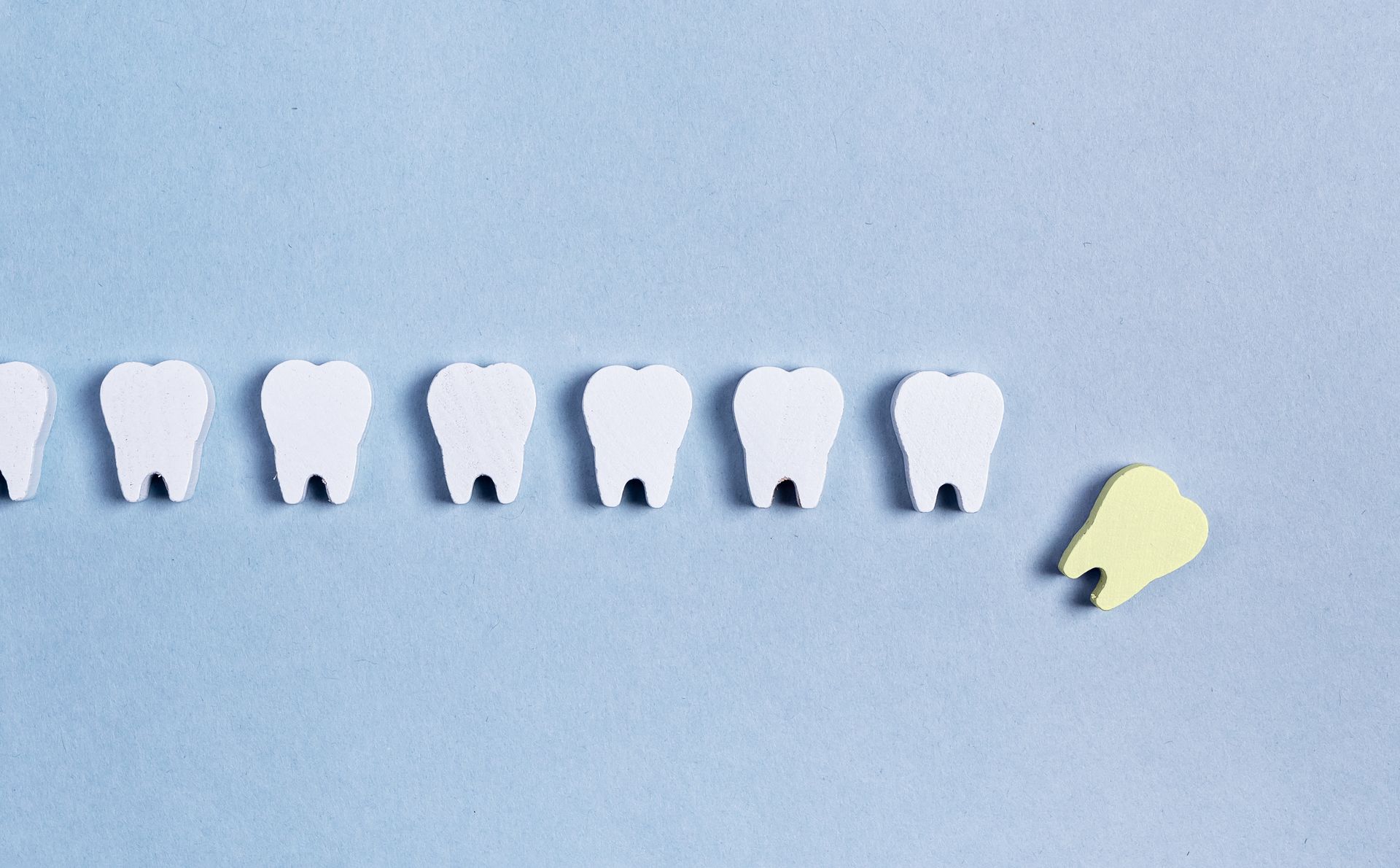세 번째 어금니라고도 하는 사랑니는 일반적으로 10대 후반에서 성인 초기에 나옵니다. 사랑니는 즉각적인 문제를 일으키지 않는 경우가 많기 때문에 사랑니를 발치해야 하는지 궁금해하는 사람들이 많습니다. 그러나 사랑니 발치 여부는 궁극적으로 사람마다 다를 수 있는 여러 요인에 따라 결정됩니다.
사랑니를 왜 그리고 언제 발치해야 하나요?
치아 은행:
사랑니를 그대로 보존하는 것을 고려해 본 적이 있나요? 미래에 발생할 수 있는 치과 응급상황에 대비해 세 번째 어금니를 보존하는 것은 현명한 조치입니다. 치아가 손상되거나 썩은 경우,
교정기 및 투명 교정기와 같은 교정 치료
와 같은 교정 치료는 사랑니를 활용하여 사랑니를 매끄럽게 대체하고 정상적인 치아처럼 기능할 수 있으며, 눈에 띄는 틈새를 남기지 않습니다!
이렇게 하면 추가적인 수술 절차를 거치지 않아도 되고 불완전한 미소로 고통받을 필요도 없습니다. 따라서 다음에 예방 목적으로 소중한 세 번째 어금니 네 개를 한꺼번에 발치할 생각이라면 한 번 더 생각하고 치아 은행에 보관해 두는 것이 언젠가 하루를 절약할 수 있습니다.
Sufficient Space in Your Jaw:
Some people might worry about having not enough room in their mouths for all of their teeth. However, the good news is that sometimes there's plenty of space to fit them without any issues! Even if your wisdom teeth are hiding and hard to see,
orthodontic treatments like braces or aligners can help move your teeth into a position where all your teeth can fit, including the wisdom teeth! So don't fret too much about overcrowding - with proper treatment, you can still keep all your chompers intact!
수술 위험:
사랑니 발치는 다른 수술과 마찬가지로 위험이 없는 것은 아니며 환자에게 몇 가지 내재된 위험이 있습니다. 거의 모든 수술에서 흔히 발생하는 수술 후 통증과 불편함 외에도 이러한 유형의 발치에는 수술 중 또는 수술 후 발생할 수 있는 출혈 합병증과 같은 추가적인 우려가 있습니다.
사랑니를 발치하면 잇몸, 입술, 혀, 턱 등 여러 부위의 감각에 영향을 미칠 수 있는데, 사랑니는 해당 부위에 감각을 전달하는 주요 신경과 가깝게 위치하기 때문에 잠재적으로 위험할 수 있습니다. 부작용은 일시적이거나 영구적일 수 있으며, 마비 및 따끔거림과 같은 증상이 나타날 수 있습니다. 사랑니 수술 후 미각 감각을 상실하는 경우도 드물지 않지만 시술을 진행하기 전에 신중하게 고려해야 합니다.
회복 시간:
사랑니 발치 후에는 회복을 위해 약간의 휴식이 필요합니다. 시술 후 며칠 동안 부기와 불편함을 느낄 수 있으므로 이 기간에는 부드러운 음식으로 제한하는 것이 좋습니다. 발치 후에는 입꼬리가 늘어날 수 있는 잠재적 결과를 고려하는 것도 중요합니다. 이 동작은 입술뿐만 아니라 얼굴의 다른 부위에도 보기 흉한 갈라짐이나 멍을 유발할 수 있습니다.
사랑니를 발치해야 하는 이유와 시기는 언제인가요?
사랑니를 발치하는 것이 때때로 권장되는 몇 가지 이유가 있습니다:
1.
다른 치과 치료 방해:
사랑니는 때때로 치아를 과도하게 밀집시키거나 사랑니를 위한 공간을 만들기 위해 다른 영구치를 제거해야 하는 등 교정기와 같은 치과 치료를 방해할 수 있습니다. 교정 치료에 방해가 되지 않도록 하기 위해 사랑니를 발치하는 것이 임상적으로 도움이 되는 경우가 많습니다.
2.
치아 밀집 방지:
입 뒤쪽의 여분의 치아는 인접한 치아를 앞으로 밀어내어 부정교합을 유발하고 나쁜 교합을 유발하는 경향이 있습니다. 이는 두통, 만성 안면 통증 등을 유발하는 제대로 씹기 어려움 등 많은 건강상의 위험을 초래할 수 있습니다. 사랑니 발치는 이러한 치아 문제를 예방하고, 모든 영구치가 가지런하게 자리 잡도록 하며, 심미적으로 보기 좋게 만들어 장기적인 구강 건강을 최적화하는 데 도움이 됩니다!
3.
사랑니 충격:
사랑니를 발치하는 것이 권장되는 이유 중 하나는 사랑니가 충격을 받아 제대로 나올 공간이 충분하지 않은 상태이기 때문입니다. 충격을 받은 사랑니가 입안으로 부분적으로 나와서 계속 붙어 있으면 해당 치아는 물론 주변 치아까지 충치가 생길 수 있습니다. 또한 사랑니가 끼이거나 위치가 틀어지는 등의 다른 합병증을 유발하여 불편함과 통증을 유발할 수 있습니다. 따라서 이러한 치아를 발치하는 것은 더 이상의 문제를 예방하기 위해 시급히 처리해야 하는 문제입니다.
4.
낭종 및 종양:
사랑니에는 낭종이나 종양 형성과 같이 주변 치아, 신경 및 턱뼈에 부정적인 영향을 미칠 수 있는 잠재적인 합병증이 발생할 수 있습니다. 이런 문제가 발생하면 전문가들은 성장한 사랑니와 사랑니를 모두 발치할 것을 권장합니다.
사랑니 발치 비용
사랑니 발치 비용은 발치할 치아의 수와 위치, 마취 여부 등 다양한 요인에 따라 달라질 수 있습니다. 특히 치과 보험이 적용되지 않는 경우 발치 비용이 많이 들 수 있습니다. 싱가포르에서는 메디세이브가 사랑니 발치를 어느 정도 보장합니다. 총 비용은 발치의 복잡성 정도와 수술 전 진정제 선택 여부 등 여러 요인에 따라 달라지며, 비용이 상당히 비쌀 수 있습니다. 따라서 발치와 관련된 결정을 내리기 전에 발치와 관련된 모든 잠재적 비용을 평가하는 것이 중요하며, 이는 개별 상황에 따라 달라질 수 있습니다.
All in all, it's important to weigh the pros and cons carefully before making any decisions about wisdom teeth removal. Remember, not everyone needs to remove their wisdom teeth. Some people's wisdom teeth come in just fine and don't cause any problems. If you have any questions or worries about your wisdom teeth,
ask your dentist. They're there to help you have a healthy smile!







